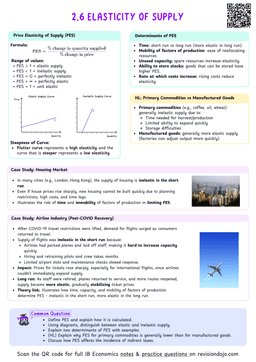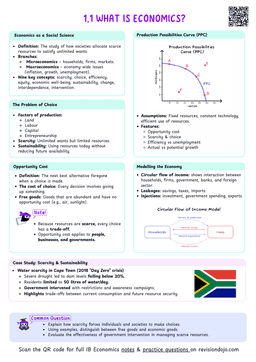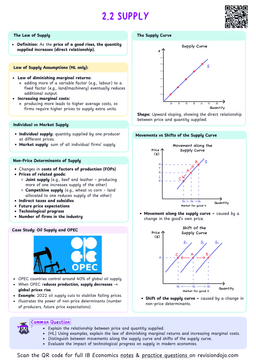- Since achieving equity is a desirable outcome for the economy, measuring the income and wealth inequalities present in it is essential.
- There are two main tools economists use to measure and display income and wealth inequalities:
- The Lorenz curve.
- The Gini coefficient.
Note that in theory the income shares can be divided into any percentage, depending on the needs.
The Lorenz curve
Lorenz curve
A graphical representation of the income inequality within an economy.
An economy's population can be divided into income quintiles:
- Income quintiles divide an economy's population into groups of 20% of the population, ordered from poorest (least income-earners) to richest (highest income-earners).
- The economy's population is therefore divided into five quintiles (five 20%), ranging from the poorest 20% to the richest 20%.
- This way, it can be seen how different is the income distributed within a country (Table 1).
| Quintile | Poorest 20% | Second 20% | Third 20% | Fourth 20% | Richest 20% |
|---|---|---|---|---|---|
| % of Total Income | 5% | 10% | 15% | 20% | 50% |
| Income Decimal Index | 0.05 | 0.1 | 0.15 | 0.2 | 0.5 |
- Table 1 above shows how:
- The poorest 20% only earns 5% of the total income.
- The second 20% earns 10% of the total income.
- The third 20% earns 15% of the total income.
- The fourth 20% earns 20% of the total income.
- The richest 20% earns 50% of the total income (half of the economy's income is earned by the top 20% the population).
- The Lorenz curve (Figure 1) can be used to represent this data:
A Lorenz curve represents the income inequality of an economy in the following way:
- Axis representation of population and income:
- The y axis represents the cumulative percentage of total income earned in the economy (0% to 100%).
- The x axis represents the cumulative percentage of population in the economy (0% to 100%).
- The cumulative income percentage is plotted against the income quintiles, and joined by a line of best fit, making the Lorenz curve.
- A diagonal line (line of perfect equality) is drawn for reference, connects the left bottom and top right corners. This would be the Lorenz curve of an economy with perfect income equality.
If there was perfect equality, each income quintile would receive the 20% of the total income in the country.
- The Lorenz curve can be used to compare income distributions over time or between countries.
- This helps policymakers assess the effectiveness of interventions aimed at reducing inequality.
Remember that the closer the Lorenz Curve is to the line of perfect equality, the higher the income equality of the country (or lower inequality).
The Gini Coefficient
Gini coefficient
A numerical representation of the information given by the Lorenz Curve, measuring income or wealth inequality on an index from 0 (perfect equality) to 1 (perfect inequality).
- The Gini coefficient essentially represents the income inequality information given by the Lorenz curve, in a numerical manner.
- The Gini coefficient is an index between 0 to 1, where:
- Values closer to 0 signify more equality in income/wealth distribution
- Values closer to 1 signify greater income/wealth inequality.
As it can be seen in Figure 2 above:
- The Lorenz curve diagram is divided into two areas: A and B.
- The formula for the Gini coefficient is then:
$$\text{Gini Coefficient} = \frac{A}{A + B}$$
Note- Note that all of these methods (quintiles, Lorenz curve, Gini coefficient), can also be used to calculate wealth inequality.
- It is also interesting to note that wealth inequality is usually higher than income inequality. This is because:
- Higher income people are able to save more of their income and accumulate wealth.
- The slow growth in wages hinders the accumulation of wealth by the poor.
Is it even possible to represent inequalities mathematically?


